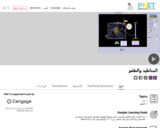
Measuring and comparing volume using nonstandard units - Mathematics Instructional Plan
- Subject:
- Mathematics
- Material Type:
- Lesson Plan
- Provider:
- VDOE
- Author:
- VDOE
- Date Added:
- 10/03/2024

Measuring and comparing volume using nonstandard units - Mathematics Instructional Plan

Measure and Compare Length, Weight, and Volume Formative Assessment - Just in Time Quick Check, Teacher Notes, and Supporting Resources

Developing and using the formula for determining the volume of a rectangular prism - Mathematics Instructional Plan

Differentiate among perimeter, area, and volume; Identify which concept is appropriate for a given situation - Algebra Readiness Remediation Plan

Differentiating among area, perimeter, and volume; solving practical problems - Mathematics Instructional Plan

Apply concept of perimeter, area, or volume - Algebra Readiness Remediation Plan

Deepen understanding of solving practical problems involving surface area and volume - Rich Mathematical Task Template and Student Version

Measuring the surface area and volume of solid figures in order to rank them least to greatest - Algebra Readiness Remediation Plan

Determine Volume and Surface Area of Rectangular Prisms and Cylinders Formative Assessment - Just in Time Quick Check, Teacher Notes, and Supporting Resources

Measure volume and surface area of real-life examples of rectangular prisms and cylinders to solve problems - Algebra Readiness Remediation Plan

Devise a method for measuring volume and surface area of cylinders and rectangular prisms - Algebra Readiness Remediation Plan

Find the volume and surface area of rectangular prisms and cylinders - Mathematics Instructional Plan

Use mathematical reasoning to compute the volume of prisms, cylinders, cones, and square pyramids, using formulas - Algebra Readiness Remediation Plan

Solve Problems involving Volume and Surface Area of Rectangular Prisms and Cylinders Formative Assessment - Just in Time Quick Check, Teacher Notes, and Supporting Resources

Relational Solids Algebra Readiness Remediation Plan

Volume and Surface Area of Cones and Pyramids Mathematics Instructional Plan

Changing Attributes Volume and Surface Area Mathematics Instructional Plan

Experiment with a helium balloon, a hot air balloon, or a rigid sphere filled with different gases. Discover what makes some balloons float and others sink.

When will objects float and when will they sink? Learn how buoyancy works with blocks. Arrows show the applied forces, and you can modify the properties of the blocks and the fluid.

K.9 Comparing Volume Co-Teaching MIP